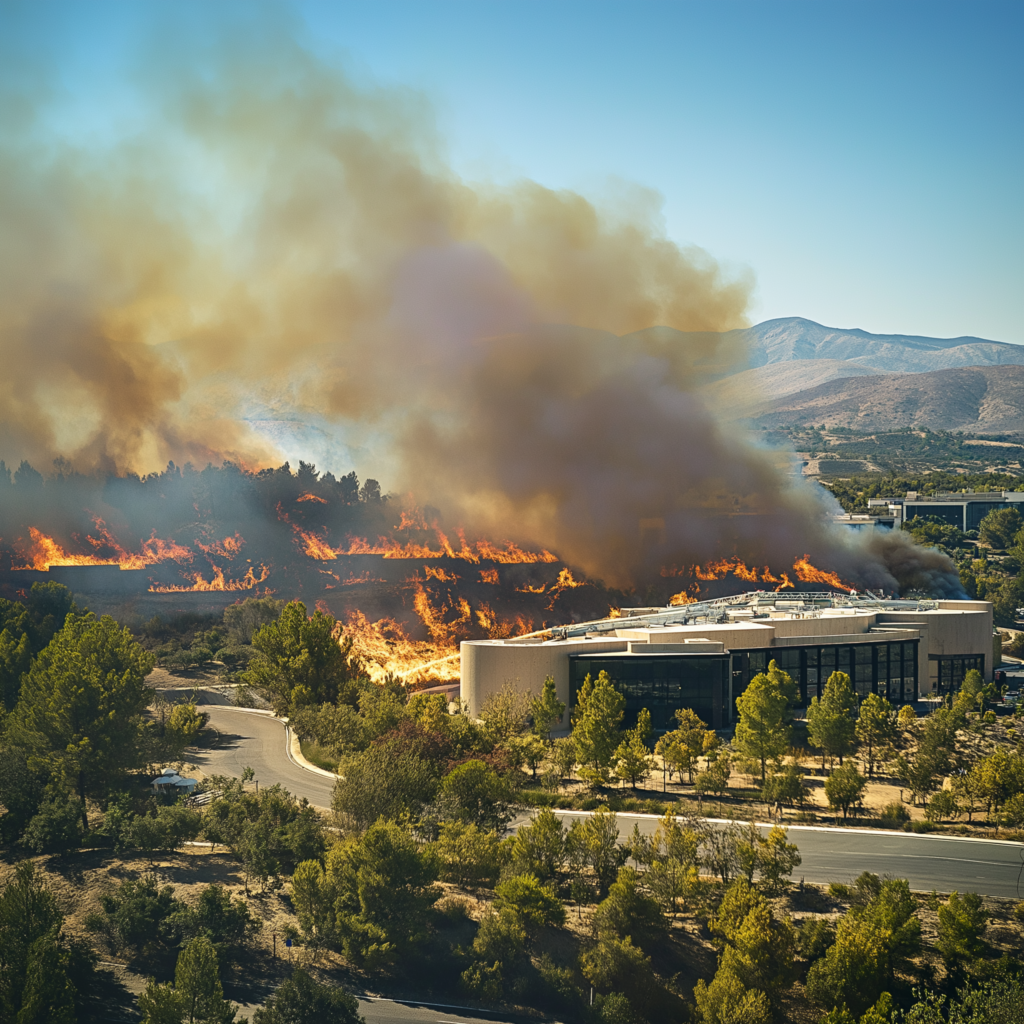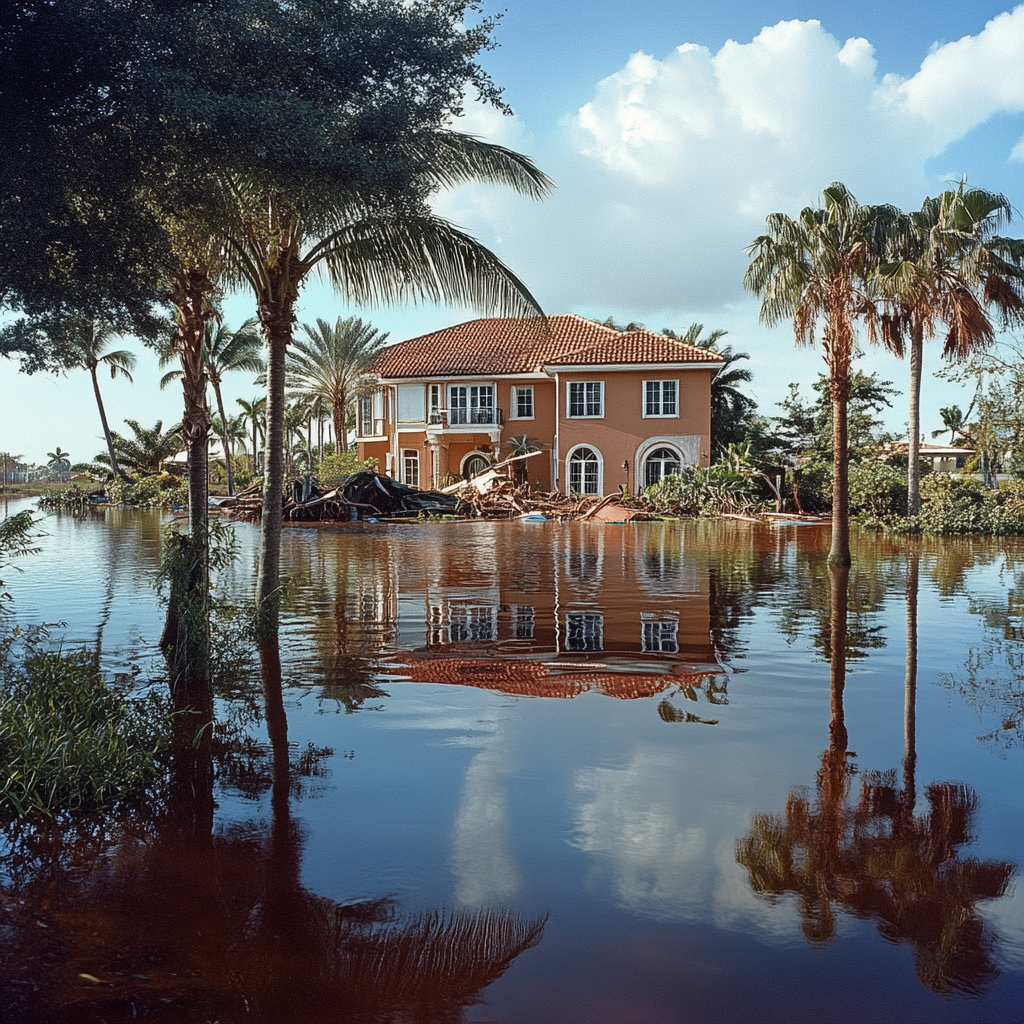The sky has turned an eerie shade of green, the kind that signals something ominous on the horizon. The winds are already howling outside your window, bending the palm trees to their breaking point. The local news station repeats its urgent warning—the hurricane has intensified to a Category 5 and is heading straight for your town.

Your home is more than just four walls. It holds your most prized possessions, including your rare book collection—first editions of Melville, Faulkner, and Hemingway, the delicate pages of illuminated medieval manuscripts, and a fragile but priceless assortment of original letters from the American Revolution. The thought of losing these treasures is unbearable. They are not just valuable; they are irreplaceable pieces of history, a link to a past that can never be recreated.
But time is against you. The roads are already congested with evacuees, and there’s no way to transport your collection to safety. Even if you could, where would you take it? Museums and libraries have disaster protocols, but as a private collector, you are left to fend for yourself. As the first floodwaters breach the threshold of your home, you realize you are about to lose something that no insurance payout can ever bring back.
The Cultural Casualties of Natural Disasters
This nightmare scenario is not just hypothetical—it has played out in real life, time and time again. When Hurricane Katrina devastated New Orleans in 2005, it wasn’t just people, homes and businesses that were lost. Entire archives of historical records, artworks, and rare books were submerged in toxic floodwaters. The Louisiana State Museum, home to countless artifacts reflecting the region’s deep history, suffered significant damage, and smaller private collections—many without backup preservation measures—were completely destroyed.
In 2012, Hurricane Sandy wreaked havoc on New York’s Chelsea art district, flooding galleries and destroying millions of dollars’ worth of paintings, sculptures, and historical artifacts. A total of $500 million in fine art losses were reported. The storm surge was so powerful that entire collections were literally washed away, with no trace left behind. Some of the artists, like painter Ronnie Landfield, lost decades of work, their life’s creations reduced to waterlogged canvases and floating debris.
On the other side of the country, California wildfires have obliterated personal collections and historical institutions. The most recent Los Angeles fires, which tore through Pacific Palisades and Altadena in early 2025, were particularly devastating to the art community.
The historic Zorthian Ranch, an artist colony established in 1946, suffered catastrophic damage. Known for its eclectic structures and as a hub for bohemian culture, the ranch saw all but two of its buildings destroyed in the Eaton Fire—an immense loss, not just to its current residents, but to the cultural legacy of Southern California.
Private collectors also suffered irreplaceable losses. Collector Ron Rivlin reported losing millions of dollars’ worth of art, including around 30 pieces by Andy Warhol. Artists such as Kathryn Andrews and Brad Eberhard saw their studios and life’s work consumed by the flames. In the Palisades, numerous homes with valuable art collections were consumed by the flames. The destruction of these personal archives represents not just financial losses, but a profound erasure of cultural history.
The financial impact of the Palisades and Eaton fires has been staggering. With insured losses estimated between $20 billion and $30 billion, insurers are reevaluating coverage terms, potentially making it more difficult for collectors to obtain affordable insurance in high-risk areas.
Insurers Paying for Loss Instead of Prevention

The insurance industry has long operated on a model that emphasizes post-disaster compensation, reimbursing policyholders for losses incurred after events like hurricanes, wildfires, and floods. This traditional approach focuses on assessing damages post-event and providing financial restitution based on the terms of the policy. However, with the increasing frequency and severity of natural disasters, this reactive model is facing significant challenges.
In recent years, insurers have experienced substantial financial strain due to escalating claims from climate-related events. In 2023, damages from billion-dollar extreme weather events reached $92.9 billion, with estimated insured property losses totaling $78.8 billion. In response, many insurers have raised premiums, reduced coverage, or withdrawn entirely from high-risk markets, leaving policyholders with limited and often unaffordable options.
This situation raises a critical question: Is it time for the insurance industry to rethink its business model? Instead of solely providing compensation after disasters, insurers could play a proactive role in risk mitigation. By incentivizing policyholders to seek competent risk assessments and implementing preventive measures—such as reinforcing structures, creating defensible spaces around properties, or investing in early warning systems—insurers can reduce the overall risk exposure. This approach not only benefits the insurers by potentially lowering the number of claims but also enhances community resilience against natural disasters.
Proactive Protection Before Disaster Strikes
So how can collectors—both private and institutional—protect their collections before catastrophe strikes? The answer lies in early intervention.
Museums and major institutions have long relied on disaster preparedness protocols, but private collectors often lack access to the same resources. Argus Cultural Property Consultants bridges this gap by providing expert pre-disaster planning, conducting risk assessments, coordinating emergency transport, and facilitating off-site storage solutions to safeguard valuable collections. Our team works swiftly to help collectors implement protective measures, ensuring their treasures are secured before disaster strikes. By taking proactive steps, collectors can mitigate risks and preserve their cultural assets for future generations to come.
Imagine if, before the hurricane made landfall, a team of trained specialists had arrived at your door, expertly packed and transported your collection to a secure, climate-controlled location. The historical letters, the first-edition books, the antique manuscripts—all safely stored until the storm passed. Instead of watching helplessly as your collection was swallowed by the sea, you would have the assurance that your collection, and its legacy, remained intact.
For their part, the insurance industry could embrace a prevention vs. response model by offering discounted premiums to collectors and institutions that take proactive steps to protect their assets. Policyholders who engage firms like Argus for site security inspections, risk assessments, and disaster planning could qualify for reduced rates, similar to how home security upgrades lower homeowner premiums. This model would benefit both insurers and collectors—reducing financial exposure for insurers while encouraging the preservation of cultural assets before disaster strikes.
In the face of increasing climate-induced disasters, proactive protection must become the new standard. Institutions and private collectors alike should push for insurance policies that support preventive measures rather than just paying for loss. They should take steps to safeguard their holdings, working with specialists who understand the delicate and invaluable nature of fine art and other cultural property. Because once the storm passes, once the fire burns out, once the floodwaters recede—no amount of money can replace treasures lost forever.
